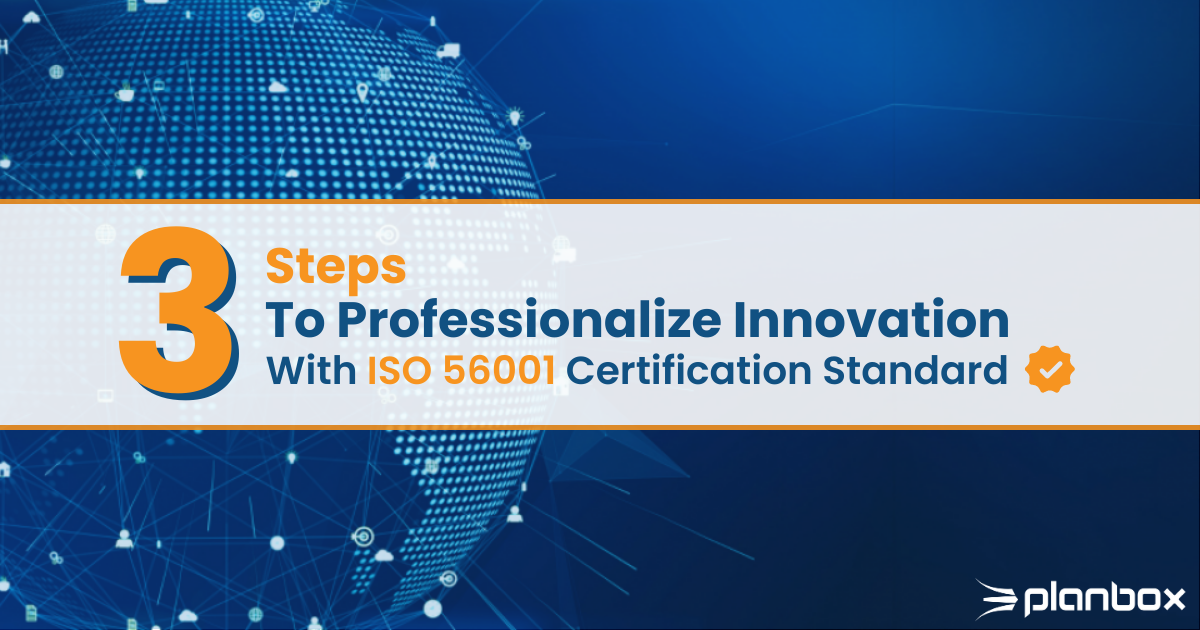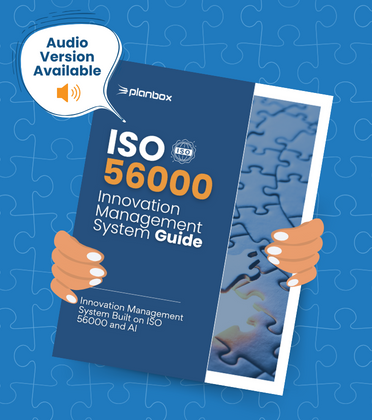This article originally appeared on Forbes.
Most executives continue to say innovation is extremely important, but a majority of them remain dissatisfied with their innovation performance. ISO 56001, the upcoming requirements standard for innovation management, is just around the corner, and it has the potential to revolutionize how innovation has been managed for the past 20 years. Innovation has always been viewed by skeptics as a set of actions that involve a lot of guesswork, a great deal of luck and the domain of the few tasked with the opportunity to make it work when needed.
Almost a decade ago ISO started an ambitious initiative to do what many may think is counterintuitive and perhaps even a mission impossible. The objective was to create a set of principles that can ultimately make innovation as predictable and persistent as any other job function inside the organization.
Here are three simple steps you can take now to be ready to professionalize innovation with ISO 56001 standard:
Learn The Innovation Standard Basics
ISO 56000 is a new standard for innovation management. It includes all the key aspects for those contemplating operationalizing and developing a single source of truth for innovation. Think of it as getting your innovation house in order. First, you can lay the right foundation by looking at the fundamentals with ISO 56000, released in 2020, and this provides the right vocabulary that helps you have a common understanding and shared definition of what innovation means in your organization, which is indispensable to get going.
Next, you have to create your innovation blueprint. ISO 56002 released in 2019 provides guidance to build an innovation management system (IMS). This is the core consideration in streamlining and automating the process. Getting a head start here can potentially put you 12-18 months ahead of others and serve as the best way to prepare for the requirements standard, ISO 56001, that is planned for 2024.
Now you can build the right structure for innovation by leveraging the tools and methods through the following: ISO 56003, released in 2019, to handle innovation partnerships, ISO 56005, released in 2020, covers intellectual property management, ISO 56006, released in 2021, helps with strategic intelligence management. Shortly you will also have ISO 56007, expected in 2023, which will guide the process for managing opportunities and ideas, and finally, ISO 56008, also expected in 2023, focused on innovation operation measurements. The series covers key innovation pillars so that you can build a long-lasting business that is future-fit and able to guide the organization through the best of times and the worst of times.
Meet The ISO 56002 Guidelines
Implementing the guidelines is an excellent way to get ready. ISO 56002 provides all the necessary considerations to help shape your IMS. The process involves implementing these eight foundational principles: realization of value, future-focused leaders, strategic direction, culture, exploiting insights, managing uncertainties, adaptability and systems approach.
You can start to set up procedures, develop the necessary reporting and train your users on how to operate it. If your organization has any experience implementing any other ISO standard, then you’ll find it easier as this new standard follows the common framework and language from other standards to ensure you have a harmonized structure with ISO 9001 for quality and IS0 14001 for environment as just some examples.
This will put you leaps and bounds ahead of your competitors who will need to think about building those effective controls and ensure compliance with the upcoming certification standard in ISO 56001.
Innovation Management Gap Analysis
First and foremost, you need to do an innovation management analysis to determine what is your current state versus your desired future state. You can leverage the ISO 56004 released in 2019 to help you create an innovation maturity assessment, or you can leverage other innovation management competency tests such as Planbox’s innovation capability maturity model. Think of this exercise as asking a home inspector to verify the condition of your house and give you a report on areas to improve or issues to address. This analysis is a huge timesaver as it will allow you to identify what’s not working and what’s the best way to align with the ISO 56000 standard.
Why do this? Well, ISO is a well-renowned organization so you can imagine they’ve done their homework and realized that making innovation sticky is an important business consideration and one that requires ongoing work to maintain and upkeep in good working order.
Once ISO 56001 is available there will be many good reasons to consider doing the certification. Some of these benefits include: increasing long-term revenue, realizing consistent and sustainable business results, scaling and professionalizing innovation management, developing a lasting competitive advantage and finally measuring innovation ROI to prioritize investments and improve compliance with regulations.
Innovation Of A Functional Unit
HR, finance, sales and marketing, and just about any function you can think of inside an enterprise, have to be well structured with the appropriate tools to help bring results and ensure proper ROI. Why would innovation that is the company’s lifeblood be left to chance? By taking these steps, organizations can put themselves 12-18 months ahead of their competitors and ensure compliance with the upcoming certification standard. Additionally, it will help organizations to streamline and automate the process, making innovation as predictable and persistent as any other job function within the organization.

Ludwig Melik
CEO at Planbox and author of the Future-Fit Manifesto. I help organizations build a sustainable culture of innovation. Follow me on Twitter or LinkedIn.


